(Lyon 1863 – Coulevan 1942)
A winter morning in the snow
Oil on canvas
H. 55 cm; W. 38 cm
Signed lower left
Jules-Alexis Muenier, is part of the lineage of French artists who could be described as poets of the everyday. A student of Jean-Léon Gérôme at the École des Beaux-Arts in Paris, he was quickly acclaimed for his mastery of drawing and the finesse of his observation. A member of the Académie des Beaux-Arts, Muenier stood out for his tender and sincere gaze on rural life and the landscapes of the Aube countryside where he grew up. Sensitive to light, attentive to the minute vibrations of the atmosphere, he strives to translate not only what he sees, but also what he feels. Following the realist tradition while sometimes flirting with impressionism, Muenier offers a peaceful, deeply human style of painting, imbued with a discreet lyricism. He favors modest scenes, which he magnifies with a subtle palette and a delicate treatment of light. His work is a celebration of silence, of the suspended moment, of the humble beauty of the world.
Our painting, created in the 1930s, is one of the most beautiful expressions of Muenier's contemplative gaze, far removed from his early works. Of great softness, the composition is bathed in a milky, almost evanescent light, as if filtered by the very silence of the snow. The house in the foreground, with its ochre walls and roof weighed down with white powder, gently fades into the winter calm, while a large tree, majestic and laden with frost, watches over it like a guardian of the seasons. Everything here is suggestion: the shapes melt into a pink and gold mist, the snow absorbs the sounds, the contours dissolve, and the scene seems to float in a dream. The gaze is invited not to scrutinize, but to feel. The pictorial material itself becomes almost immaterial, touched, like a breath on the canvas. With this work, Muenier does not seek to tell, but to give birth to an emotion: that of a silent morning where time seems suspended, and where the soul, soothed, withdraws into the contemplation of the frozen world. The painting then becomes a silent prayer, an offering to the fragile beauty of the winter moment.















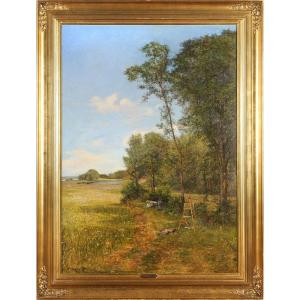

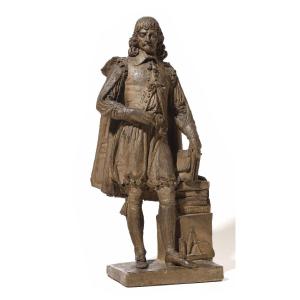



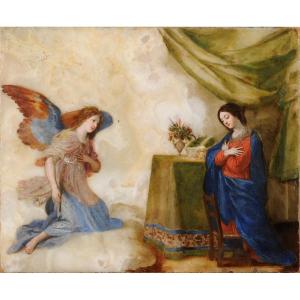
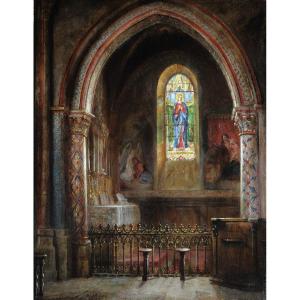







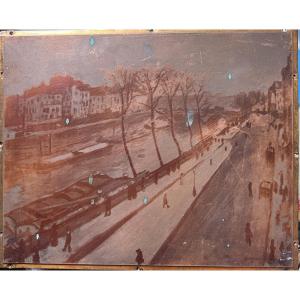

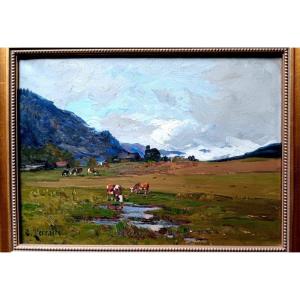



 Le Magazine de PROANTIC
Le Magazine de PROANTIC TRÉSORS Magazine
TRÉSORS Magazine Rivista Artiquariato
Rivista Artiquariato